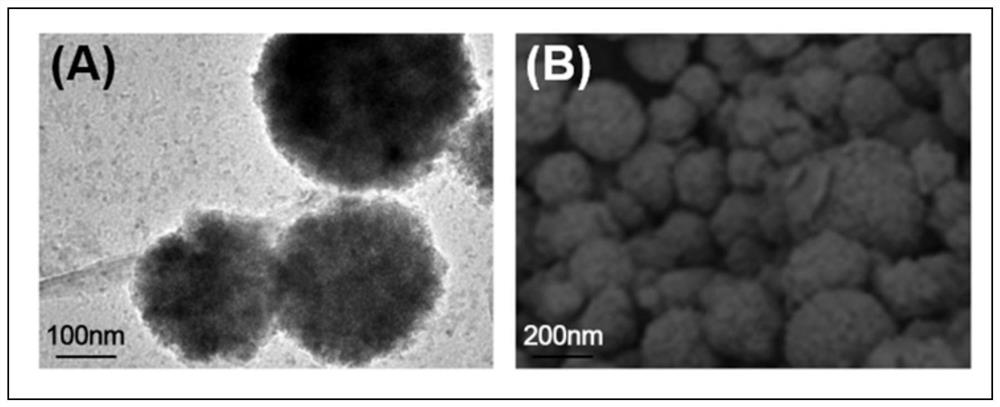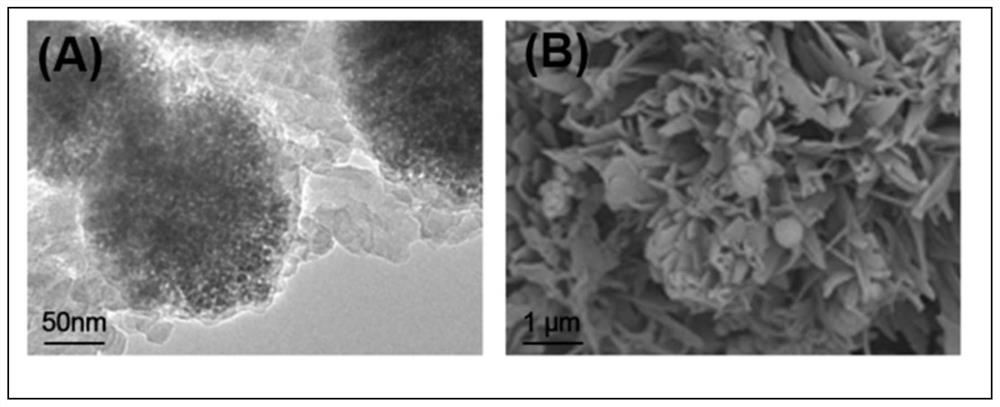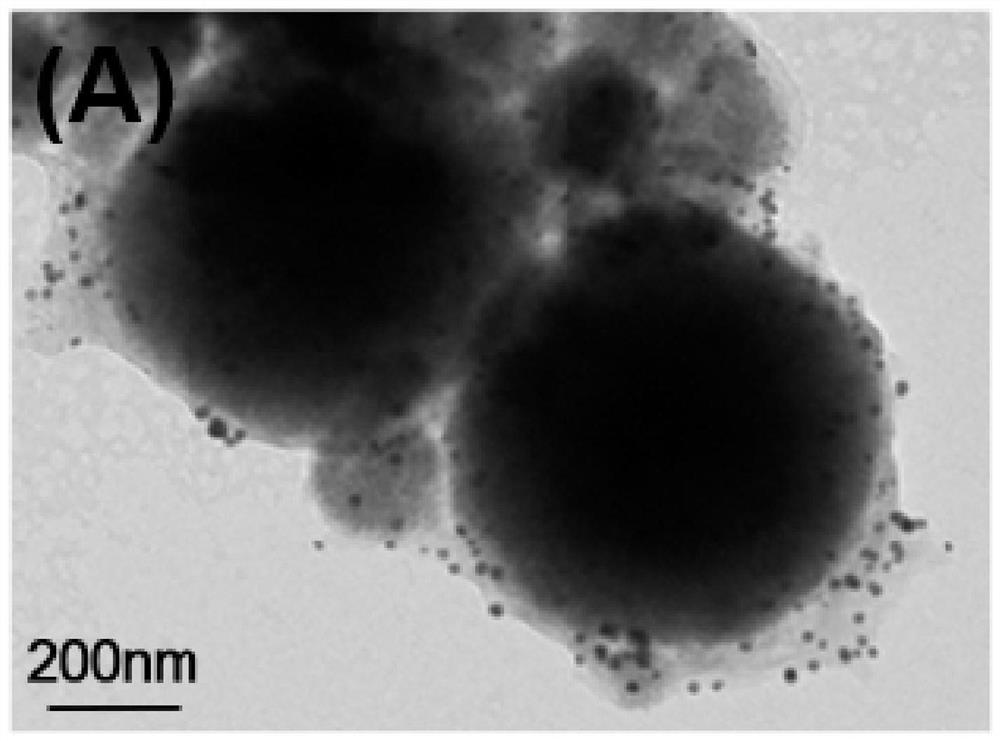GII.4 norovirus detection, synthesis method thereof, and GII.4 norovirus detection method
A synthesis method and virus technology, applied in the analysis of materials, material analysis by electromagnetic means, measurement devices, etc., can solve problems such as differences in human subjective factors, and achieve stable probe binding, excellent conductivity, and good effects.
- Summary
- Abstract
- Description
- Claims
- Application Information
AI Technical Summary
Problems solved by technology
Method used
Image
Examples
experiment example 1
[0067] Experimental Example 1: Preparation and Characterization of Fe 3 o 4 The method of @COF(TpDA) is as follows:
[0068] (1) Fe 3 o 4 Preparation of nanoclusters: Weigh ferric chloride hexahydrate (1.35g, 3mmol), ammonium acetate (3.85g, 50mmol), sodium citrate (0.4g, 1.36mmol), add 70mL ethylene glycol after mixing, Dissolve under stirring conditions, the mixture is completely dissolved to obtain a dark yellow solution, transfer the solution to a round bottom flask, continue to stir at 160 ° C for 1 h to form a uniform black solution, and then transfer the solution to a stainless steel autoclave (capacity 100mL), reacted in an oven at 200°C for 16h, after the reaction was terminated, the reaction product was naturally cooled at room temperature to obtain a suspension containing black precipitate, and the suspension was centrifuged at 8000r / min for 20min, The supernatant was removed, the precipitate was washed three times with deionized water and absolute ethanol, and ...
experiment example 2
[0070] Experimental Example 2: Preparation and Characterization of AuNPs@Fe 3 o 4 @COF(TpDA) nanocomposite approach:
[0071] (1) Preparation of AuNPs: Under stirring conditions, 1.07 mL of 23.46 mmol / L HAuCl 4 Add the solution into 100mL boiling deionized water, heat and stir at 110°C for 5min, slowly add 10mL sodium citrate solution with a concentration of 14.53mmol / L dropwise, condense and reflux for 30min until the solution turns wine red, and stir the solution at room temperature 15min, store at 4°C.
[0072] (2) Get Fe from the previous step 3 o 4 Add water to @COF to prepare Fe at a concentration of 1mg / mL 3 o 4 @COF solution, take 1mLFe 3 o 4 Add the @COF solution dropwise to 10mL gold nanoparticle solution with a concentration of 0.0002mol / L, stir at 4°C for 12h, centrifuge at 8000r / min for 10min, discard the supernatant, and continue washing with deionized water for 3 times to obtain AuNPs @Fe 3 o 4 @COF nanocomposites.
[0073] (3) Using transmission ele...
experiment example 3
[0074] Experimental Example 3: Synthesis and Characterization of WP5@AuNPs@Fe 3 o 4 @COF(TpDA) nanocomposite approach:
[0075] (1) WP5@AuNPs@Fe 3 o 4 Synthesis of @COF(TpDA) nanocomposite: Weigh 1mg WP5 powder, add 2mL deionized water to prepare 0.5mg / mL WP5 aqueous solution, slowly add 1mL WP5 aqueous solution to 2mL1mg / mL AuNPs@Fe 3 o 4 In the @COF(TpDA) solution, stir at 4°C for 4h. After the reaction, centrifuge at 8000r / min for 15min, remove the supernatant, add deionized water, repeat the centrifugation and wash three times, and put the product at -50 Freeze-dry at ℃ for 12h.
[0076] (2) Infrared spectrum, Zeta potential method is used to characterize the product, in infrared spectrum (A), 3430cm -1 and 1566cm -1 The peaks are the water and hydroxyl peaks adsorbed on the surface of the material, compared with COF (TpDA), at 571cm -1 The peak that appears at the Fe 3 o 4 The characteristic peaks of Fe-O functional groups in @COF(TpDA) are similar to those of F...
PUM
| Property | Measurement | Unit |
|---|---|---|
| diameter | aaaaa | aaaaa |
Abstract
Description
Claims
Application Information
 Login to View More
Login to View More - R&D
- Intellectual Property
- Life Sciences
- Materials
- Tech Scout
- Unparalleled Data Quality
- Higher Quality Content
- 60% Fewer Hallucinations
Browse by: Latest US Patents, China's latest patents, Technical Efficacy Thesaurus, Application Domain, Technology Topic, Popular Technical Reports.
© 2025 PatSnap. All rights reserved.Legal|Privacy policy|Modern Slavery Act Transparency Statement|Sitemap|About US| Contact US: help@patsnap.com



